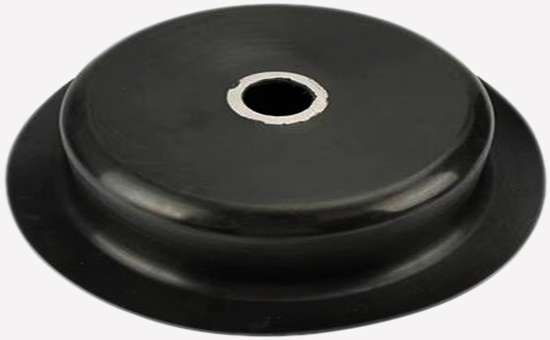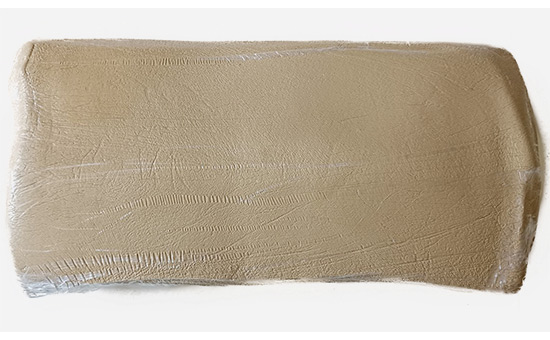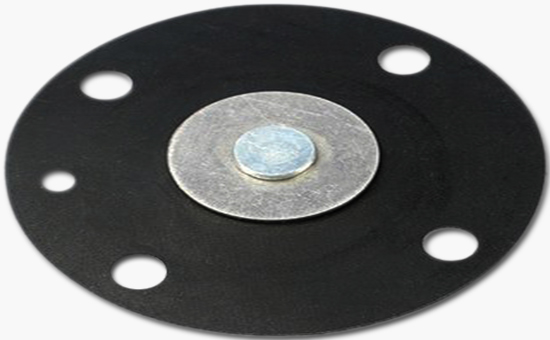Diaphragm valve is a special form of shut-off valve, which is a shut-off valve that closes the flow channel by using the diaphragm as an opening and closing part, cuts off the fluid, and separates the inner cavity of the valve body and the inner cavity of the bonnet. Natural rubber has excellent elasticity and mechanical properties, good abrasion resistance and tear resistance, and can be used in the control scene of mild media such as water and air. As a low-cost raw material to replace natural rubber, can reclaimed rubber be used in the production of rubber diaphragm for diaphragm valves?
1. Performance requirements for rubber diaphragm of natural rubber diaphragm valve
(1) High elasticity and flexibility: adapt to the deformation of the diaphragm valve during frequent opening and closing, ensure that the diaphragm can quickly return to its original state under pressure, and tightly fit the valve seat when the valve is closed.
(2) Chemical resistance: good resistance to water, air, weak acid and alkali and other media.
(3) Abrasion resistance and fatigue resistance: The rubber diaphragm of the diaphragm valve needs to withstand certain friction and stress during the working process.

(4) Temperature resistance: Natural rubber separator needs to maintain good elasticity and mechanical properties in normal temperature and low temperature environment.
(5) Dimensional stability: The size and shape of the diaphragm need to meet the design requirements to ensure the adaptability of the diaphragm in the valve.
(6) Good mechanical properties: have sufficient mechanical strength to withstand the pressure generated during the operation of the valve.
(7) Good processing performance: easy to plasticize, mix and vulcanize.
2. Natural rubber/reclaimed rubber produces diaphragm valve rubber diaphragm vulcanization formula
100 parts of natural rubber, 25 parts of reclaimed rubber, 10 parts of zinc oxide, 2.5 parts of stearic acid, 1 part of antioxidant A, 1 part of antioxidant D, 20 parts of carbon black N774, 20 parts of magnesium carbonate, 20 parts of light calcium carbonate, 5 parts of pine tar, 25 parts of graphite powder, 20 parts of asbestos powder, 0.8 parts of accelerator M, 0.5 parts of accelerator TMTD, 3.2 parts of sulfur; A total of 254 copies. (The physical properties of vulcanized rubber: hardness is about 65 degrees, tensile strength is about 10MPa, and elongation at break is about 400%. )
3. Natural rubber/reclaimed rubber production diaphragm valve rubber diaphragm formula adjustment

When using natural rubber and recycled rubber as the main raw materials to produce diaphragm valve rubber diaphragm, it is necessary to comprehensively consider the elasticity, tightness, chemical resistance, processing performance and cost of the diaphragm.
(1) Rubber raw materials: natural rubber can provide the elasticity and mechanical properties required by the rubber diaphragm of the diaphragm valve, and the appropriate amount of reclaimed rubber can effectively reduce the cost of raw materials under the premise of ensuring product performance. Compared with natural rubber, reclaimed rubber has better plasticity, fluidity, aging resistance and dimensional stability of vulcanized rubber.
(2) Reinforcing filling system: the use of high wear-resistant carbon black N330 reinforcement can improve the tensile strength and wear resistance of rubber separator compound; Combined with semi-reinforcing carbon black such as N774, it can improve the elasticity, elongation and flexural resistance of vulcanized rubber. Calcium carbonate and magnesium carbonate can be used as fillers to improve the hardness and rigidity of rubber compounds, and reduce costs.
(3) Vulcanization system: the physical and mechanical properties of the vulcanized rubber using sulfur-accelerator system are better; Zinc oxide as an activator can promote the vulcanization reaction and improve the wear resistance and corrosion resistance of the rubber.
(4) Anti-aging system: choose antioxidant and anti-ozone aging antioxidants such as antioxidant A and antioxidant D to prolong the service life of the rubber diaphragm.

(5) Other compounding agents: softeners can improve the processing performance and flexibility of rubber compounds; Graphite powder can improve the surface smoothness of the rubber diaphragm and reduce the coefficient of friction; Asbestos powder can give the rubber good heat resistance and dimensional stability, and ensure that the diaphragm valve can also work stably in high temperature environments.
When natural rubber/reclaimed rubber is used to produce diaphragm valve rubber diaphragm, it is also necessary to appropriately adjust the production process conditions, especially plasticizing, mixing, vulcanization, etc., which can reduce the plasticity of natural rubber E4LYY726 and improve its processability; The mixing process evenly disperses various compounding agents into the rubber, and the rubber can form a cross-linking network through the vulcanization reaction to improve its mechanical properties. The editor will continue to discuss related issues with you in the future.
Exclusive original article [commercial authorization] reprint, excerpt and excerpt in any form are prohibited without written authorization. Focus on Hongyun rubber: learn the process formula and raw material technology of producing rubber products from recycled rubber to help you reduce costs and increase profits